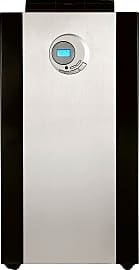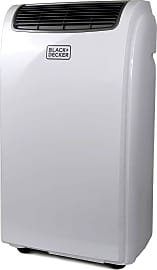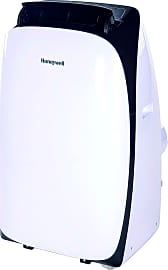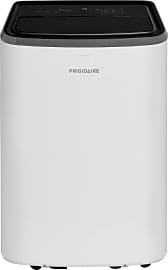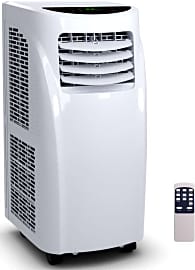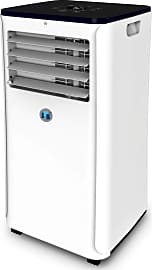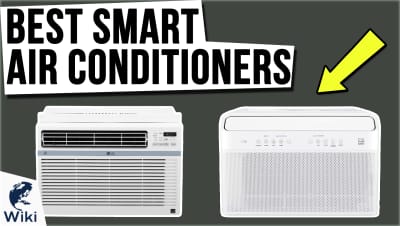The 10 Best Portable Air Conditioners

This wiki has been updated 43 times since it was first published in June of 2015. If your home, office, or workshop doesn't currently have central AC or a window unit installed, a hot summer can make it miserably uncomfortable. Fortunately, it's easy to place one of these portable air conditioners anywhere you like in order to keep cool, as long as they have access to a window for evacuating warm air. Some can also dehumidify a room and provide heat in winter. When users buy our independently chosen editorial recommendations, we may earn commissions to help fund the Wiki.
Editor's Notes
July 17, 2020:
More models in this category are gaining Wi-Fi connectivity as smart homes become more popular, but the De'Longhi 4-In-1 is one of the few models that's both trustworthy and designed to integrate easily with Alexa or Google Home Assistant. That doesn't mean you can't enjoy wireless control of the Frigidaire Cool Connect or the JHS A016, but it does mean you're more likely to be dependent on their apps, which can be hit or miss.
Weight can still be a concern here, as well, even though all of these models are given casters for easy movement. If you're placing your AC in a carpeted room, this becomes even more of an important factor. Something like the Haier 14XCT, at over 70 pounds, might not be your best bet there, while the Black + Decker BPact 08, while a little less powerful, weighs only 26 pounds. Look for a middle ground in what you're comfortable to move with the amount of cooling you need.
If you live in a humid climate, it might be smart to look for a model that can handle large volumes of water in its dehumidification efforts, and one with a big enough tank that you won't have drain it every couple of hours — or better still, a model with a drainage hose or auto-evaporation system.
April 16, 2019:
If central air simply isn't in the picture and you're not keen on installing a window-mounted unit, a portable air conditioner may well get the job done. They're particularly useful for those of us who rent, rather than own, a living space. And you don't have to spend a ton on a decent one, either; the CostWay and JHS prove that. The CostWay and GlobalAir are some of the cheapest, though they can be a tad loud, while the JHS offers wireless control, which is an impressive feature for such an inexpensive choice. Both of Whynter's most popular options are worthwhile considerations because they chill off nearly at a moment's notice, and receive considerable praise from professional appliance testers. Haier makes a range of powerful cooling units, and the one we've showcased here is notable for being one of the quietest around, though it isn't the most efficient. In the ease-of-use category, Honeywell's single-hose model just about takes the cake, as its configuration allows for mostly clutter-free installation. But as far as performance goes, it's hard to top the widely known Frigidaire brand. Their Gallery features a well-refined Wi-Fi controller that works almost perfectly, while their FFPA U1 series comes in a range of sizes and offers a fantastic blend of performance, affordability, and quiet operation.
Special Honors
Movin Cool Climate Pro X Designed for use in warehouses and factories, these units come in configurations as powerful as 24,000 BTU, with dual hose systems and a surprisingly low power draw. They can bring relief in conditions as hot as 117 degrees Fahrenheit, and run no louder that 67 decibels with a condenser hose attached. There are a significant investment, however. movincool.com
Beating The Heat
So what do you do if you live in an apartment complex without central and/or window air conditioning?
Let's face it. Depending on where you live, the summer can get hot. Without a way to cool off indoors, you become susceptible to dangerous levels of dehydration, among other health risks. So what do you do if you live in an apartment complex without central and/or window air conditioning? Even in a large home, how would you cope with rising energy costs associated with maintaining central air conditioning for every room?
This is where the portable air conditioner comes in handy. Much like its name suggests, a portable air conditioner is a mobile air conditioning system that is ideal for cooling single rooms. Most PACs stand approximately 28-34 inches tall and include built-in caster wheels for easy transport between rooms. Unlike central and window air conditioners, the PAC does not require permanent installation, so if you spend a majority of your time in your bedroom or living room, moving the unit is fairly easy.
The process by which a portable unit cools the surrounding air involves altering the humidity and temperature levels of the outside air (which is processeed by the PAC unit) such that the thermal comfort level reflects more optimal indoor living conditions within single rooms. PACs are either evaporative or refrigerative in design. The compressor-based refrigerant PACs are air-cooled, meaning they use air to exchange heat. During this process, the air is being cooled and dehumidified. Condensed water is also collected, which produces hot air that needs to be vented. By contrast, evaporative air conditioners do not have compressors or condensers and instead use evaporated water to cool the air, much like humans and animals do during the sweating process to cool their bodies.
PACs are measured in British Thermal Units. A BTU is equal to the amount of energy needed to raise the temperature of one pound of water by one degree Fahrenheit. But wait, I'm trying to cool my room, not make it hotter by increasing the temperature of water. Let's cool off for just a second, as we need to think of BTUs as a measurement of energy. For the purposes of portable air conditioners, this measurement is used to describe how many BTUs per hour your PAC can remove from the air. The BTU measurement is directly proportional to the size of the room in which the air conditioner is placed. For example, a PAC that has 7-8,000 BTUs of energy can cool small rooms up to 250 square feet with 8-foot ceilings. Larger rooms would require a PAC with a higher BTU measurement.
PACs can also be single or double-hosed with respect to their cooling and venting processes. PACs expel warm air through an exhaust hose that is typically installed as part of a window kit. Single-hosed PACs use air from within the room to cool their condensers and then vent the warm air outside. Double-hosed PACs not only expel warm air and moisture, but they simultaneously pull more air in to cool, making them more efficient than single-hosed units.
Getting The Most Out Of Your Portable Air Conditioner
When choosing a PAC, selecting the appropriate BTU measurement is important. A high BTU doesn't always mean that the PAC is better than one with a low BTU rating. For example, if you're using a PAC with a BTU that is higher than necessary for cooling a small room, you may find the unit cycling off more often than it really needs to. If the PAC continually cycles on and off over time in that fashion, its compressor could wear out more quickly than anticipated. For that reason, finding the right balance between BTUs and room size is a good question for a salesperson for pointing you in the right direction as you shop.
A high BTU doesn't always mean that the PAC is better than one with a low BTU rating.
Think about where the unit will be placed. Even though PACs accommodate more than one type of room, some rooms will get more direct sunlight than others. You need to make sure that your PAC is powerful enough to adequately cool a room that receives direct sunlight for extended periods of time, even if the room is small.
If you suffer from allergies and live in very humid climates, a big selling point for your PAC is its ability to operate as both an air conditioner and/or a dehumidifier, since high humidity promotes the growth of allergens like mold.
Some PACs also come with built-in digital displays, adjustable fan speeds, and convenient remotes for easy monitoring and adjusting of their controls.
Portable Air Conditioning: From Deserts To Interior Decor
The concept of air conditioning dates all the way back to the times of ancient Egypt, even before the development of electricity. The ancient Egyptians used a primitive form of evaporative cooling technology by hanging reeds or wet cloth in both windows and doorways to cool the surrounding air from a breeze.
The concept of air conditioning dates all the way back to the times of ancient Egypt, even before the development of electricity.
The ancient Romans also used rudimentary aqueduct routing systems through the walls of their homes to promote circulation of water with evaporative qualities to cool the air.
Fast forward to 1758 when Benjamin Franklin and John Hadley discovered that the evaporation of volatile liquids (i.e. alcohol) can cool an object to the point of freezing water.
In 1902, Willis Carrier developed the first modern electrical air conditioning unit. Residential air conditioners became more common by the 1950s followed by popularized central air conditioning systems by the 1970s.



